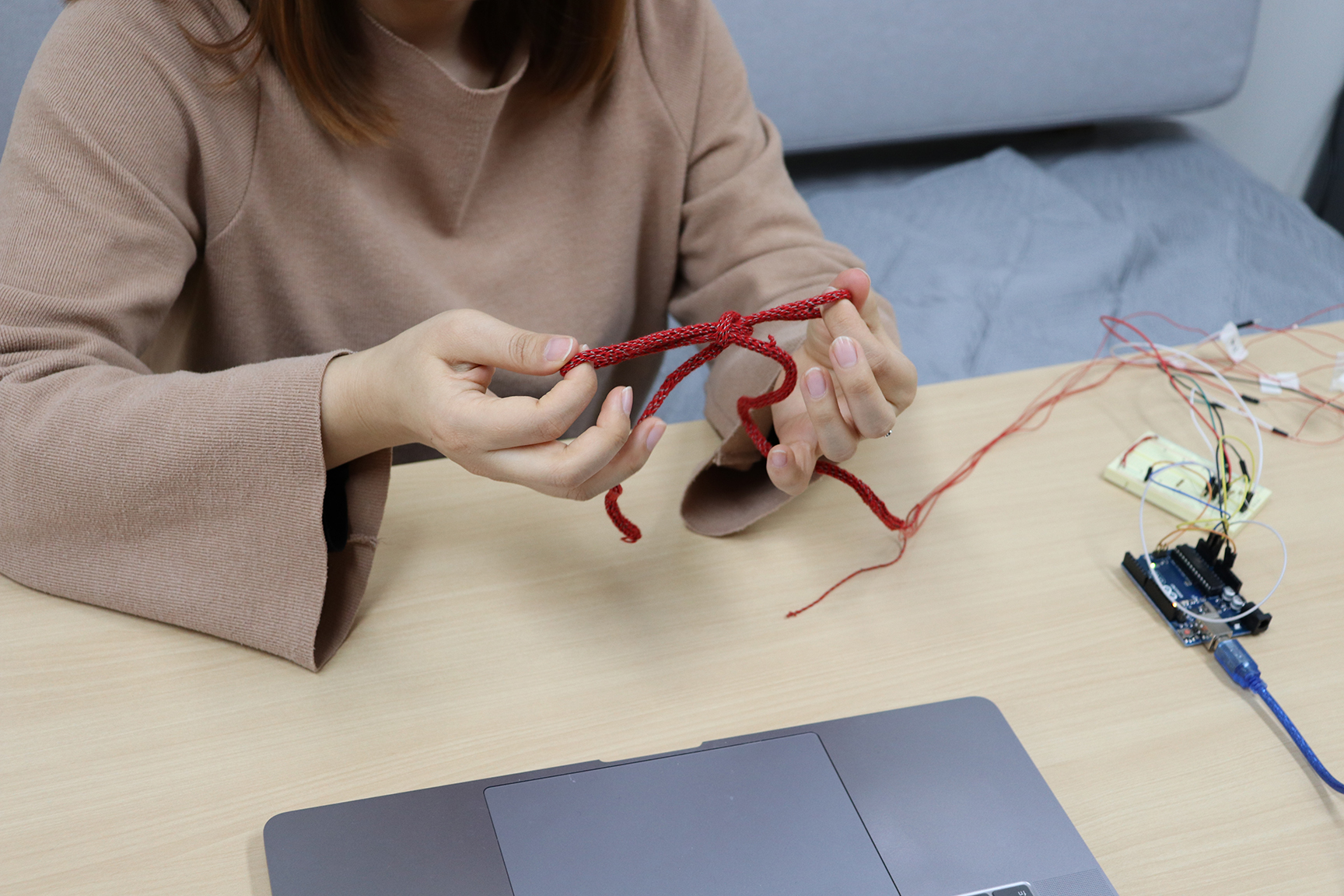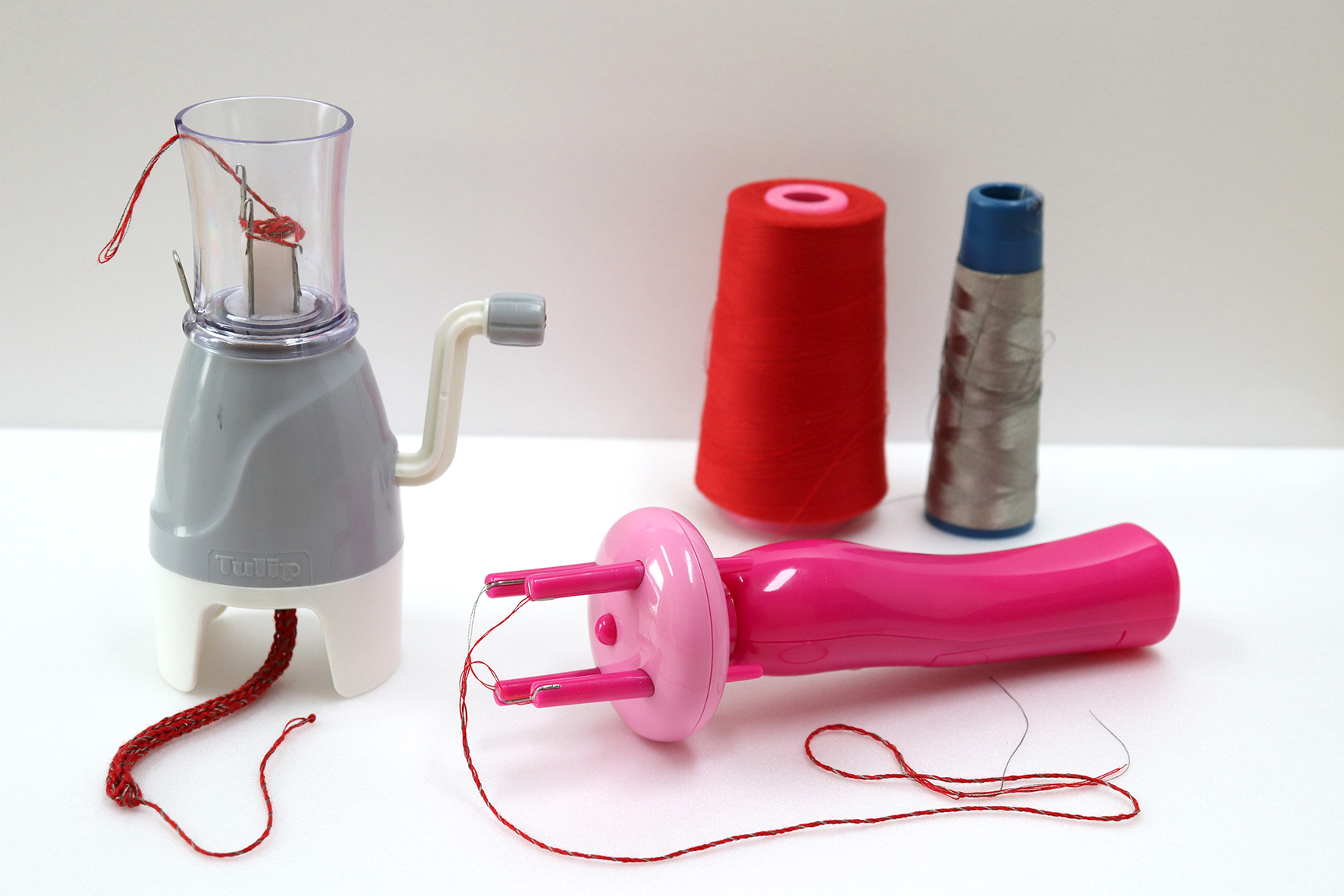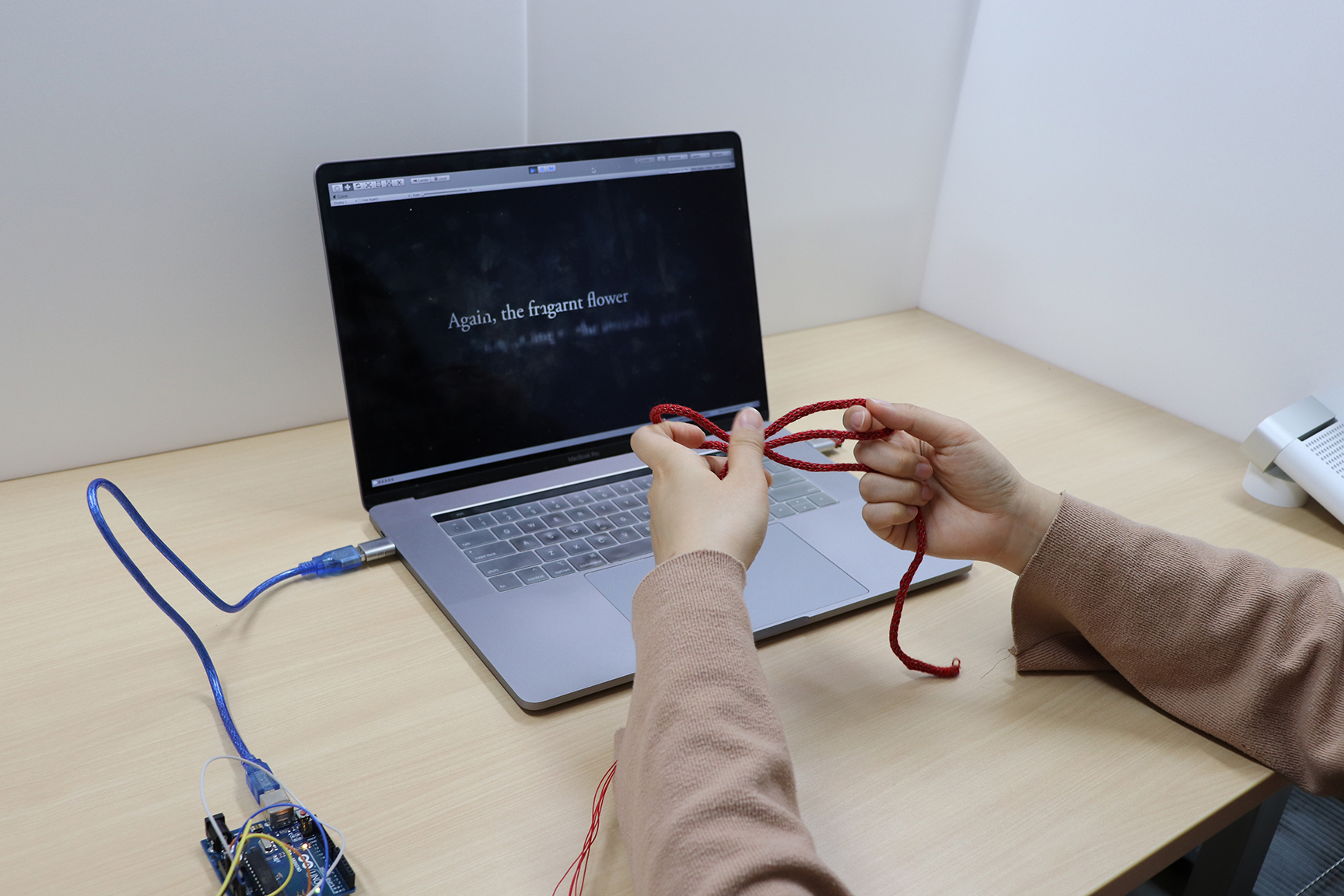Project Details
Project Date : 2020
Role: Research, Physical Design
Collaborators: Jean Chu
Tools : Arduino, MaxMSP, Unity3D, Conductive Thread
Knotting Poetry
This project reinterprets the materials and practice of the traditional Asian craft of “knotting” and creates an interface through which users can recite a poem of longing. The interface is knitted through conductive thread and sewing thread, creating a cord. This cord interface changes its resistance when it is folded, enabling the system to track its approximate shape. Accordingly, a corresponding line of poem is shown on the screen. The goal of the project is to integrate craft with interaction design and to create novel ways of computing that support users’ reflection on poetry.


Process
The current project aims to have users physically engage with a poem by configuring the cord interface that corresponds to each line of a poem. Inspired by researchers who developed knitting-based sensing such as String Figuring, I crafted a resistive cord as a sensor.
Designing a Resistive Cord Interface
The first step was to create a four-poly resistive cord by twisting together one strand of conductive thread and three strands of sewing thread using the tool, “Braid X-Press”. In this way, the resistive thread gets thick enough for knitting and the conductive and non-conductive materials are integrated as one unified resistive cord. The second step was to use an I-cord Knitter to create a four-stitch I-cord out of a four-poly resistive cord. The I-cord is a type of knitting that is hallow on the inside, so that it can hold wires and is malleable. The I-cord is around 60 centimeters long, 0.5cm thick, and measures 1megaohm on its resistance. When folded, thus creating a short circuit, the cord’s resistance is reduced.


The third step was to connect one end of the cord to the ground and another end as analogue input to measure the resistance of the cord. I used a 30-gauge wire to tie with a conductive thread of a cord and encased it inside the cord. By dividing the cord into four segments and measuring the resistance from each segment, I could identify which segment was manipulated (activated) or not (inactive).
The fourth step was to design an interactive program so that the sensor data could be analyzed through MaxMSP and sent over OSC message to Unity 3D. Each line of the poem was modeled as a 3D type in Maya and the interaction was put together in Unity 3D.



Restructuring Poetry
Based on how a user changes or triggers the sensor data in the I-cord, a corresponding line of a 16-line poem is shown on the screen. The 16 lines of the poem are deconstructed from Lee Sang’s poem, Cliff, which different users will see in different orders, depending on how each user shapes the cord while making a knot. I chose this poem since it is repeated and ambiguous, leaving room for restructuring it and presenting it in alternate ways. This poem thus lends itself to multiple interpretations of longing for loved ones, or frustration over the discrepancy between the ideal and real worlds. The 16-line poem consists of repeated lines, which lends to 12 different lines of poem. This allows the poem to be easily restructured through 12 different combinations of a digital data. Upon how and how many times a particular user activates the sensor data, different lines of the poem get triggered to fade in and out of the screen. Each text appears and disappears while the dissolve- and blur shaders produce a smooth and natural typographic effect. Depending on the variety of ways in which the user randomly bends the cord to activate the sensor data, s/he may see a few lines, or more than a few lines of the poem.
Published in Korean Society of Basic Design & Art